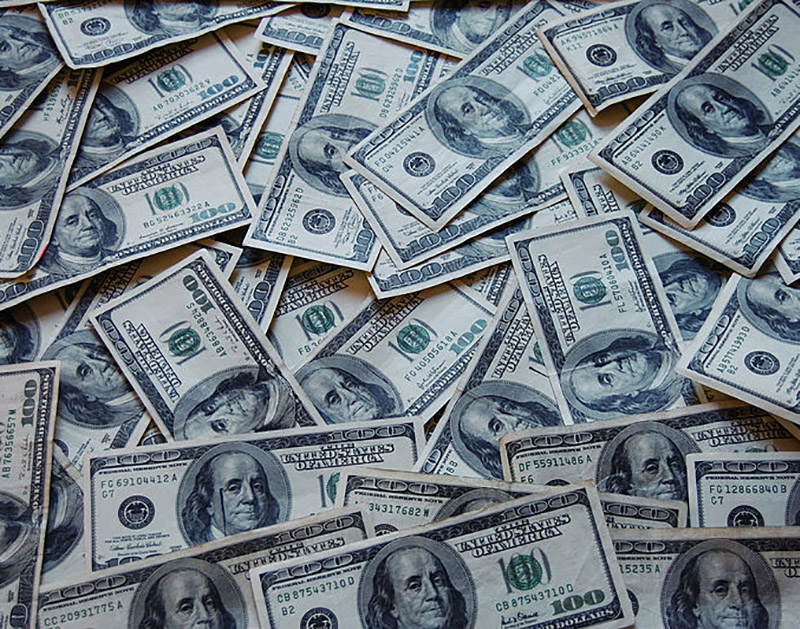A 2016 Study Found That The State Fair Of Texas Isn’t Anywhere Near The Economic Boon For Dallas That Its Organizers And Supporters Claim It Is.
Unlike seemingly every other media outlet in Dallas and, to a degree, the whole goddamn state, we here at Central Track aren’t exactly enamored with the State Fair of Texas. Why? Because, for starters, we’re not kids any more, and we’re no longer oblivious to the ways of the world. But also for a litany of other reasons, which we’ll happily run down for you here, one per day, over the entire course of the fair’s 2017 run.
They say that if something seems too good to be true, it probably is — and you can bet that this old adage applies to Dallas’ beloved State Fair of Texas, too.
Sure, at first blush, it’s easy to assume that the millions of visitors the state fair says rolls through Fair Park and its surrounding areas each year are a clear boon for the region — economic drivers that Dallas City Hall can proudly claim as worth the investment return. And the State Fair’s own estimates back up this assumption, with organizers saying their efforts pump a whopping $608 million into the local economy on an annual basis.
But an academic study published last year from Tom Kelly and Bennet Hickock of the Baylor Center for Business and Economic Research found that this number — like all entertainment-related economic impacts, from WrestleMania to the Super Bowl — is way overestimated. According to Kelly and Hickock’s research, the true contribution is closer to somewhere around $30 million.
Write these researchers of the State Fair of Texas’ boast: “In fact the State Fair has not provided supporting evidence for any of its claims nor has it released a single economic impact study. The estimates themselves vary so widely that future city planning based on them would be both difficult and unwise.”
The pair’s reasoning for questioning the fair’s economic reach can be broken down to three points:
- Most of the people that go to the fair — more than 85 percent, it turns out — are local to the Dallas region, so the the money they spend at the fair is in theory no different than the money they’d be spending at other local businesses. Put another way, expensive as the fair is, even those who are privileged enough to ball out and spend loads of cash at it are just redistributing their spending from one area till to another local one, with very little of the money spent at the fair being piped in from other regions.
- For the most part, hotel usage in Dallas sees no uptick during the course of the fair’s run. An obvious exception to this is Red River Rivalry weekend, during which University of Texas and University of Oklahoma football fans descend upon the region to watch their teams square off at the Cotton Bowl at their annual neutral site game. (Editor’s note: Later in this series, we’ll share some anecdotal rebuttals that call into question the claims that even TX/OU weekend is the boon it’s assumed to be.)
- Actual trustworthy fair attendance figures are uncertain because organizers haven’t done any official attendance estimates since 2001 and only last year adopted a ticket-scanning system to keep better track of attendance. Meaning? The 3 million visitor estimate the state fair claims is likely high, with Kelly and Hickock suggesting that the figure is actually closer to 1.7 million annual attendees.
At the very least, all this explains why an #AuditTheFair movement is gaining traction among area activists of late. Beyond the fact that the State Fair’s isn’t exactly transparent about where earnings go and how its revenue is spent (more on that later in this series, too), no one can really say for sure exactly what Dallas gains from hosting this yearly event — not unless heftier economic impact studies are conducted, anyway.
Until that happens, anyone confidently claiming that the fair is some sort of massive economic feather in Dallas’ cap is just parroting the State Fair of Texas’ own unsubstantiated claims.
It’s just weird, y’know? If the fair is indeed such an obvious plus for Dallas’ economy, is asking for proof of that too much to ask for?
Cover image via Wikimedia Commons.
More Reasons Why The State Fair Of Texas Sucks:
- Its history is super racist!
- It’s a major drain on Dallas police!
- It’s bad for your health!
- It’s so damn expensive!
- It’s not the economic driver it says it is!
- It’s a super shitty neighbor!
- It’s an altar to false idols!
- It makes Fair Park useless!
- It wastes city funds on out-of-towners!
- It exploits cute animals!
- Its executives take home too much money!
- Everything on the midway is a ripoff.
- It has willfully ignored its obligations and allowed Fair Park to fall into disrepair!
- It refuses to be transparent about the way it spends public funds.
- It can’t handle Fair Park’s long-term needs.
- Its lauded scholarship program is a joke compared to those of other, similar events.
- It uses fear tactics in its negotiations with the city.
- It goes out of its way to shield its crowds from the poor black neighborhood that surrounds Fair Park.
- Its low-level employees get burned by its executives’ bad business decisions.
- Its ticket-based economy is designed to squeeze even more cash out of attendees.
- It cares way too much about parking lots that go unused most of the year.
- It’s petty as fuck.
- It celebrates humanity’s fucked up relationship with livestock.
- It refuses to change.

